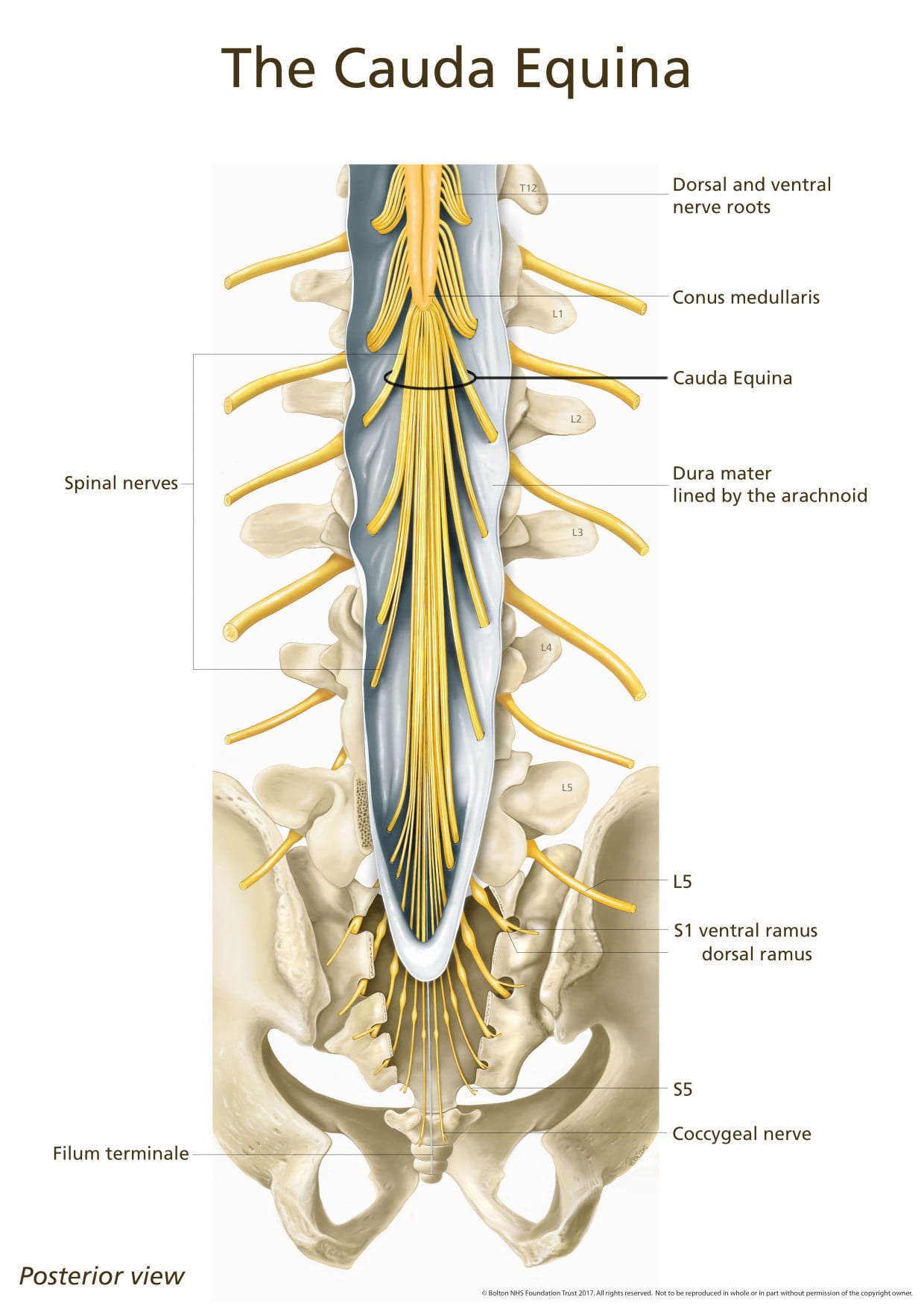Every year thousands of patients with low back pain get admitted to hospital. However, it quickly
recovers without any surgery. But acute back pain should not be neglected as it might be the
reason for serious jeopardy. Such an acute condition is often misdiagnosed and it leads to Cauda
Equina Syndrome.
This occurs due to the compression and disruption of nerve roots. More efficiently, at the lumber
of the spinal cord. If the patients with this syndrome do not undergo a rapid treatment, it may
lead to prolonged paralysis.


Causes of Cauda Equina Syndrome:
CES generally results from an onerous herniated disc in the lumbar area. Such tail bone pain
derives from exceeding stain which results in a herniated disc. With the gradually increasing age,
the ligaments start to weaken and corrosion of disc material occurs. Due to such growing
degeneracy, a relatively minor fraction may cause a disc to disintegrate.
Other important causes of CES are:
- Spinal anaesthesia
- Lumbar Spinal stenosis
- Spinal wounds and tumours
- Fierce injuries to the lower back
- Spinal inflammations
- Birth abnormalities
- Postoperative lumbar spine surgery complexities
- Spinal arteriovenous malformations
- Spinal haemorrhages
Symptoms and diagnosis:
These symptoms often differ with severity and emerge gradually over time. However, CES
possesses diverse symptoms. The seriousness of this syndrome relies on the degree of
compression upon nerve roots.
The term ‘Lumbosacral plexopathy’ often gets involved with cauda equina syndrome. In this
case, some identical symptoms often emerge. These are peripheral nerve disorder, spinal cord
compression, conus medullaris syndrome. Such syndromes evolve after they exit the spinal
column and move through the pelvis.
However, patients should remain cautious due to such acute symptoms which might imply CES:
- A diminution of reflexes in the extremities
- Acute low back pain
- Current commencement of bladder dysfunction
- The current onset of sexual malfunction
- Saddle anaesthesia
- Sensory oddities in the rectum or bladder.
- Motor weakness and sensory diminution on both legs
- The recent commencement of bowel dysfunction
Medical history conjugation:
- Any previous case of cancer
- Current acute infection
- Current fierce injury to the back
- Recent lumbar spine operation
Diagnosing Cauda equina Syndrome:
These following tests might be conducive in diagnosing CES:
- Myelogram: Due to such tailbone pain, a myelogram often performs to detect the seriousness. It is an X-ray of the spinal canal followed by injecting a contrast material. Therefore, the material goes into the adjacent cerebrospinal fluid spaces. It will show displacement on the spinal nerves because of herniated discs, tumors, and bone exuberance.
- Magnetic resonance imaging (MRI): It is a diagnosing process that produces 3D images of our body using advanced technology and magnetic fields. MRI creates various images of nerve roots, spinal cord, and its vicinal areas.
Treatment:
If you have been suffering from CES, you need acute surgery. The surgery will successfully shun
the compressing material from the nerves. Despite that, it will also restrain pressure on the
nerves. Thus, reaching the area at which damage is irreversible.
Such tail bone pain cannot be eliminated if the surgery does not happen immediately. Such an
apathetic act will cause paralysis of legs, loss of control over bowel and bladder, and so on.
Counting on the reasons for CES, you may need strong dosages of corticosteroids. These can
efficiently curtail swelling. If you are infected, you need antibiotics. If there is any tumour,
chemotherapy, or radiation is required after surgery.
Living with Cauda Equina Syndrome:
Surgery may not be fruitful enough to permanently cure nerve damage. But you need to spend a
quality of life and let not the disease overpower you.
- Get in touch with an occupational therapist, social worker, etc.
- Spend quality time with your family and let them indulge in your care.
- You may join a social media page of CES support group.
Managing Bladder and Bowel Function:
Most of the bowel and bladder function is automatic. But if you have CES, you may lose control
over voluntary parts. That is why you may not understand when to urinate and eliminate the
wastes by yourself. Some common recommendations for conducting bladder and bowel
malfunction:
- Vacant the bladder with a catheter 3-4 times each day. Drink galore of water and other fluids. Also, practice spontaneous personal hygiene to shun urinary infections.
- Check for the availability of waste. Now clear the bowels with covered hands. You may use glycerin to quickly vacant the bowels. Use protective pants and pads to cut the risk of leaks.
Final Verdict:
Epidemiology shows 1-6% of lumbar disc herniations occur between people. In a severe onset, sensory and motor scarcity in the lower body typically grow within 24 hours. Slow commencement can develop over progressively, and symptoms might come and go over the course of various weeks or months.
